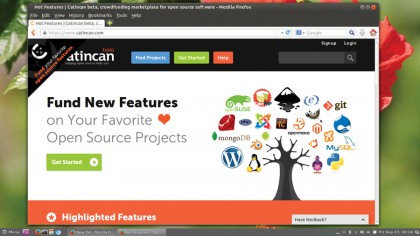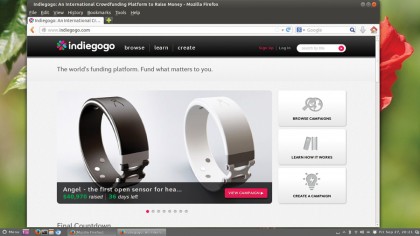The power of crowdfunding: how to make the most of it
Get funding with minimum hassle
No matter how much funds they may or may not have. If they don't share your enthusiasm, they won't contribute.
The side perks

Although raising capital is the most obvious reason for crowdfunding, there are several other ancillary benefits to following this route with your project. Running a successful crowdfunding campaign can give you a fantastic opportunity to gain visibility and build interest in your project. You not only get to gauge the demand for your project, you do so with minimal financial risk in a very short span of time as compared with taking onboard venture capital by offering stakes in your startup.
The Ubuntu Edge campaign on Indiegogo is a classic example of this. Canonical didn't reach its hefty target of $32m (and by reaching over $12.8m the campaign broke crowdfunding records) but that didn't stop the mainstream press covering the fact that an Ubuntu OS was coming to smartphones in 2014. In essence, running a crowdfunding campaign will let you know if you have a good idea and if there's a demand for it in the marketplace.
It isn't surprising then that many successful campaign managers have gone back to the venture capitalists that had initially turned them down to show that there's a demand for their project and that people are willing to pay the price they had set.
Crowdfunding models

What you've read up to now is a very broad view of crowdfunding. In practice crowdfunding encompasses several different fundraising models.
To begin with you have the donation model that has been around for years. People donate money to a project or cause they believe has moral and ethical value and is good for the community. They don't expect any return for their financial contribution besides the satisfaction of having made a difference.
Then there's the rewards-based model. This is the model which comes to mind when most people think about crowdfunding. In this model people who are making a financial contribution can pre-buy a product or are rewarded in some way. So the crowd makes a monetary pledge to the project and the project offers them something in return.
Get daily insight, inspiration and deals in your inbox
Sign up for breaking news, reviews, opinion, top tech deals, and more.
This model is further subdivided into two models. The first is the 'all or nothing' model where a project has a specific financial target that it sets and intends to reach. If the campaign doesn't reach that target the project initiators do not receive the funding, and the lenders don't receive their rewards.
The other model is the 'keep it all' model where whatever money is raised in the crowdfunding campaign is retained by the project initiators irrespective of whether they reach the set target or not. Many consider the 'all or nothing' model to be a more compelling choice.
There's also a lesser-known "bounty" model where the accumulative funds collected for a particular task are given to anyone who completes the project.
Another less high profile, yet revolutionary, model is the 'equity-based' model which allows people to invest small amounts towards funding startups. In exchange they can expect to receive dividends based on the profits of the business. This is more popular in the UK and Europe because of there are less legislative hurdles, (see Crowdfunding rules and regs in the UK) but the model may soon be legalised in the US as well.
Running a successful campaign
There are quite a few differences that separate successful campaigns from others that fail to reach their target. Before you launch, prepare every aspect of the campaign in as much detail as you can. You can't fly by the seat of your pants. You need to make sure you have a plan for every week of the campaign.
With almost two decades of writing and reporting on Linux, Mayank Sharma would like everyone to think he’s TechRadar Pro’s expert on the topic. Of course, he’s just as interested in other computing topics, particularly cybersecurity, cloud, containers, and coding.
